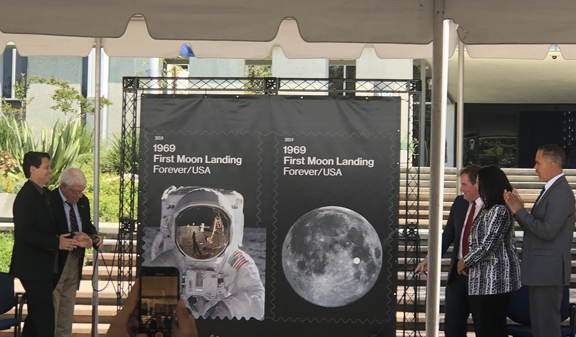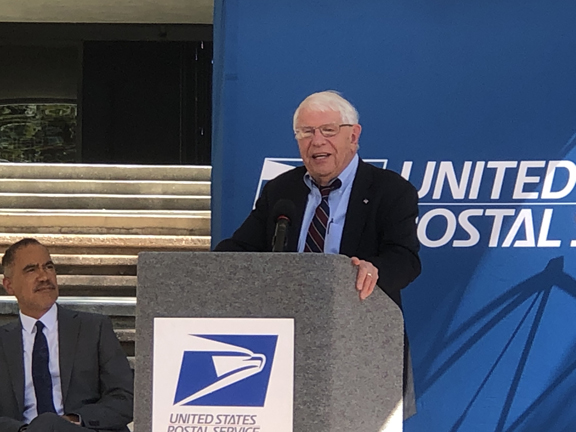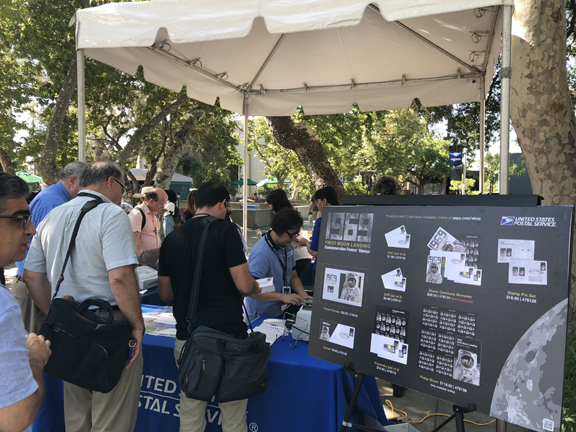
From left are Alfred Santos, USPS district manager, Robert Parker, former astronaut, Michael Watkins, JPL director, Andrea Razzaghi, associate director for NASA management office and Michael Greene, JPL director for communications and education.
By Mary O’KEEFE
On July 26, the U.S. Postal Service unveiled its “1969: First Moon Landing” forever stamps at a ceremony at Jet Propulsion Laboratory.
“Fifty years ago three astronauts started on a journey across a quarter million miles to the moon,” said Michael Greene, JPL director for communications and education.
Two stamps have been released honoring the Apollo landing. One stamp features a photo of Buzz Aldrin walking on the moon. The other stamp features a photo of the moon taken in 2010 by Gregory H. Revera from his home in Madison, Alabama. A dot on the photo indicates the Eagle lunar module’s landing site, according to JPL.

The Apollo landing stamps were not the first foray into recognizing historic people and occasions. The U.S. Postal Service has honored history-making moments and people including Elvis Presley and Norman Rockwell, and Black History and the Veterans Administration.
“I am happy to be here on behalf of the United States Postal Service to present the 1969 First Moon Landing forever stamp celebrating one of the greatest scientific and technological achievements,” said Alfred Santos, USPS district manager.
Having the unveiling event at JPL was particularly appropriate because of the work the Lab did in those early days of space exploration; the path to the moon was not an easy one.
Robert Parker spoke at the ceremony. He had a unique perspective on the Apollo missions because he served on the astronaut support crews for Apollo 15 and 17. In addition he was a program scientist during three manned Skylab flights, and is a veteran of two Spacelab missions. He worked at Caltech for many years.
Parker described the work JPL did with the Ranger program, which was to explore the lunar landing by photographing the moon, and landing, or crashing, onto the surface. In the 1960s, JPL designed and built a series of impact probes called Rangers.
“The first four of those were all unsuccessful,” Parker said. “It’s not easy.”
Ranger 7 was the lucky one that slammed into the surface of the moon on July 31, 1964. And – a JPL note – this is where the lucky peanuts practice started at the Lab. Someone in Mission Control was eating peanuts during the successful Ranger 7 mission. So now peanuts are passed around during mission launches like the Mars landings.
Parker credited the JPL Ranger missions and the later soft landing spacecraft, the Surveyors, as the reasons why he was at the event. If there had not been those successful missions there would not have been successful manned space travel.
“Some of you are old enough to remember seeing those pictures of the surface [of the moon] getting closer, closer and then you only saw part of the picture. And you know why? Because it landed,” he said. “I think saying ‘landing’ is too soft a word. That was exciting.”
The stamps are available now at local U.S. post offices. They are forever stamps so they can be used regardless of a future raise in mailing costs.

